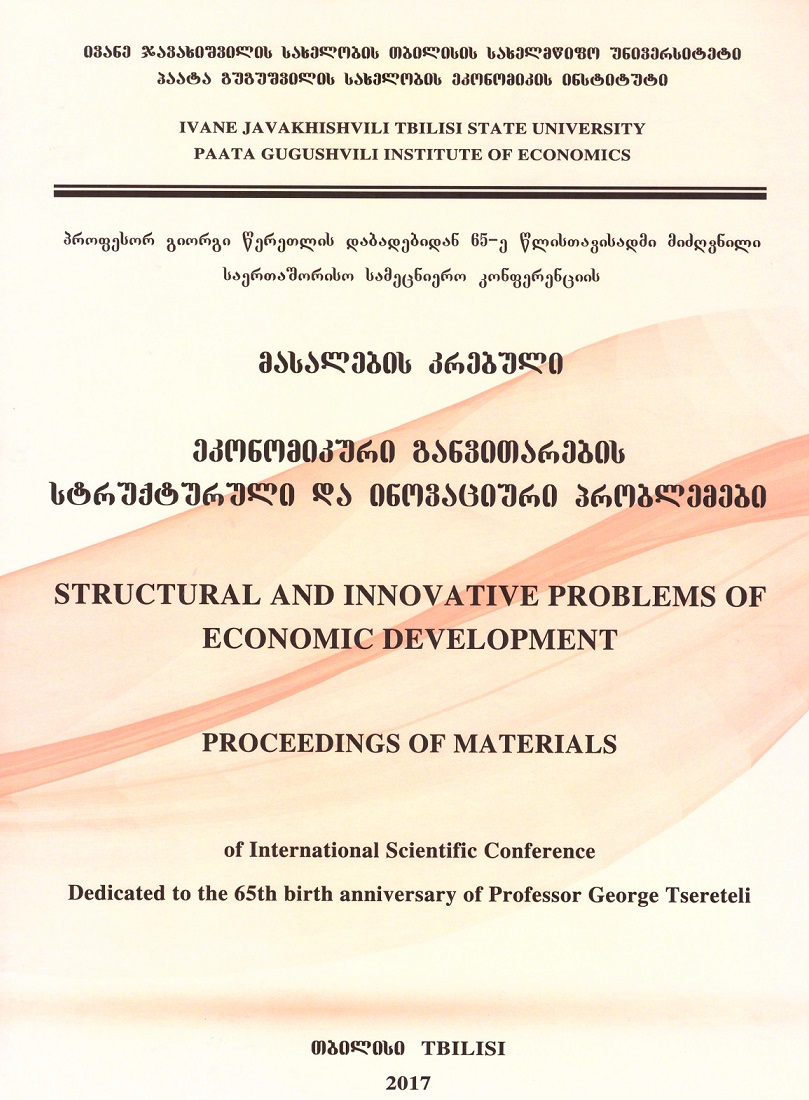
Ivane Javakhishvili Tbilisi State University
Paata Gugushvili Institute of Economics International Scientific

ABOUT SEVERAL IMPORTANT CONSTRUCTION PROJECTS IN TBILISI
Summary
Tbilisi, as the capital of Georgia, has always been distinguished by the scale of construction. But after Georgia gained independence, no construction work was carried out for a long time. With the advent of the new century, the process of residential construction, which was very profitable from a commercial point of view, began again in Tbilisi, and no attention was paid to the construction of other types of facilities. Fortunately, this trend has changed in recent years, and quite a few original public buildings have been added to the capital, of which we will focus on only a few.
Among the latest buildings built in Tbilisi, the new complex of the Georgian State Broadcasting Company, completed last year, should be noted first. It is unique in its architectural solution and has already gained international recognition. The most important is the separate building of the TV and film filming pavilions with dimensions of 95,0 X 35,0 meters, where there are four pavilions of different sizes, completely independent and isolated in all respects, where any kind of filming can be carried out.
The second no less important object is the new business center complex of the "TBC" bank on Lisi. It is built on a mountain hill adjacent to Lake Lisi and is completely different from the buildings designed and built in Georgia so far. The total area of the complex is 70,000 m2. The first two floors are completely given over to a closed parking lot. Above it is built a completely glazed frame building of a high-rise business center, with inclined monolithic reinforced concrete columns. It should be noted that the author of the project made it a requirement to use architectural concrete, that is, to perform monolithic reinforced concrete works at such a high level that it would not be necessary to carry out facing works. It should also be noted that when developing the slope adjacent to Lake Lisi, it is necessary to carry out large-scale reinforcement works due to the danger of landslides.
Due to the lack of construction areas in the central part of the city, construction is underway in many places on the territory of former industrial buildings and factories. For example, a Toyota Caucasus warehouse was built in Avchala, the construction of which was carried out with the financing of this famous Japanese company. The warehouse building, lined with aluminum alloy and built in full compliance with modern logistics requirements, has become one of the landmarks of this street. Also, in the old district of Tbilisi, on the left bank of the Mtkvari, near the Galaktioni Bridge, the construction of an office building and a guest house of the Azerbaijani Pasha Bank is underway, where a 9-meter cantilever section of reinforced concrete was pre-stressed during the construction process, which contributed to the saving of a large area on the first floor. Temka also belongs to the old district, where the construction of the new building of Public School No. 138 was completed the year before last. Its main landmark is the decoration of the facade with composite tiles of different colors, which is one of the rare exceptions, since the facades of all new buildings are glazed, and this trend is quite common. It became boring. The original decoration of the facade of the school building made it more attractive and enlivened the environment around it, overloaded with one-type and monotonous houses.
Finally, it is necessary to mention the unique Citizen project. The mentioned settlement, by its design, represents a kind of small city with all the necessary infrastructural elements in the city center, with 4 multi-storey residential buildings of completely different designs and a 44-storey skyscraper, which was designed by the design company founded by one of the most famous architects in the world, Zaha Hadid. Its first stage is planned to be completed by the end of 2026.
